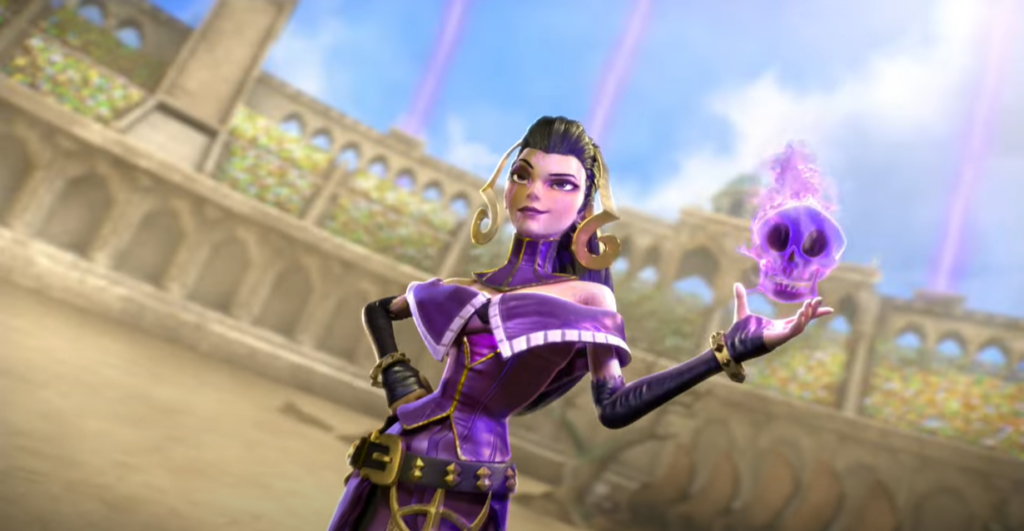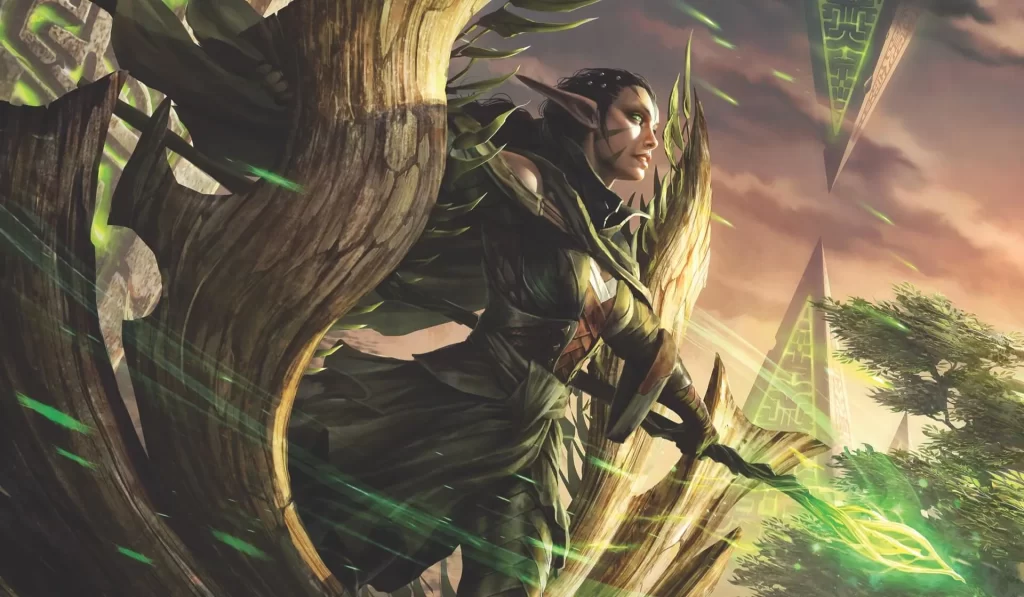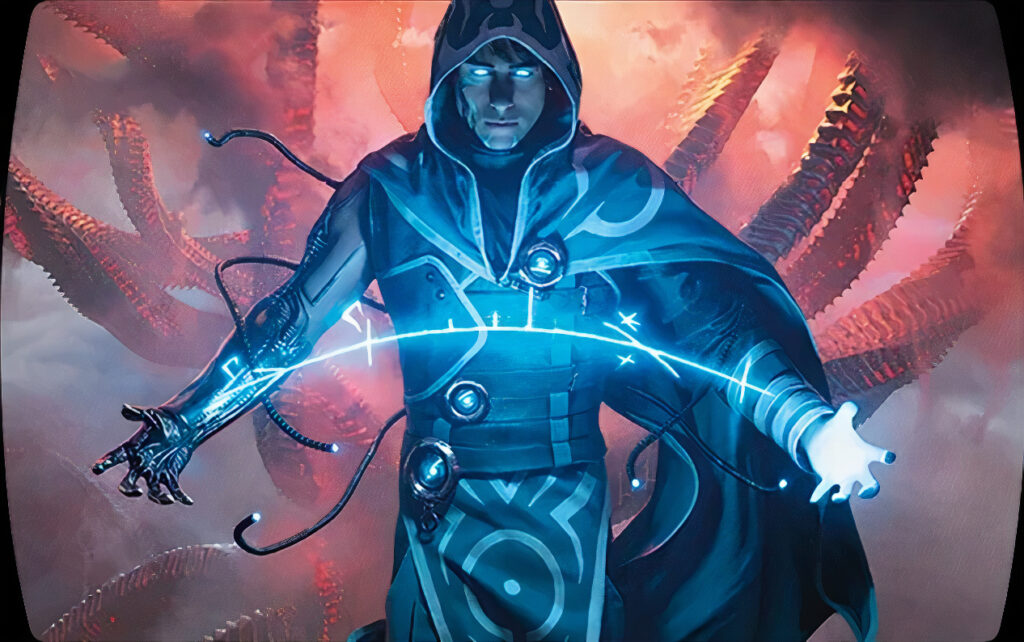Magic Spellslingers was originally called Valor’s Reach and inspired by a magical dueling stadium. It’s a mobile card game that combines bluffing and counterplay for a unique and strategic experience. The game is designed for one-handed use and focuses on Planeswalkers, who have unique card types and playstyles. Newcomers can use pre-made decks, while experienced players can customize their decks.
You can get new cards by completing in-game tasks and by opening packs, and the game is free to download. The developers are using In-App Purchases, but they are working to reduce the prevalence of pay-to-win mechanics.
Released in February of 2020 under its new name, Magic Spellslingers, the game is designed for casual mobile gamers. Spellslingers is intended to be both a gateway game for Magic fans to other titles in the series, such as MTG Arena, and a successful cash cow in its own right. As part of WotC’s “Year of Digital Expansion,” the game’s full release occurred that year, in August 2022. By the time Spellslingers was released, however, both ManaStrike and Magic: Legends had been taken down.
Chandra

Last week, we briefly mentioned the Spellslinger Chandra, who is the default character that every player starts with in the game. She is geared towards aggressive red strategies, but can also play a more midrange defense when necessary.
One of Chandra’s unique abilities is her “Torch!” ability, which deals 4 damage to the dome on Turn 0. She also has “Splash of Color”, which allows her to run up to six cards of a single splash color. However, 4 damage may not seem like much in a game where most characters start with well over 20 life. Chandra herself only has 24 life, making her mirror matches the closest thing to a direct facsimile of Magic tempo.
Chandra’s Signature cards are where she really shines. Fire Elemental is one of the best two-drops in the game, recently buffed into a 3/2 that Shocks your opponent when it attacks. Chandra’s Firecrafter, a 3/3 for 3 that gives you a random red damage-dealing Spell or Trap, is well-costed for both beatdown and defense scenarios. Her best card is Flame Shot, a four-mana Spell that deals 3 to a target enemy and 1 to each other enemy. This can conditionally be a one-sided board wipe, and always deals some damage to your opponent.
However, building a tight Red Deck Wins build around her with your initial collection of Commons and Core Set (silver symbol) cards can be tricky. The best Chandra lists often play like tempo decks, looking to temporarily neuter key blockers rather than worry about hard removal. Shock, Burn Through, and Goblin Shortcutter are a linchpin of red aggro that you’ll see again and again in future chapters.
The best Chandra decks are either monored or splash black for options like Pact of the Warlock. But be careful, you do have to respect the existence of Lava Axe; it can be a really good finisher in this game even though it was never very competitive in Magic. Lastly, be prepared for any deck to potentially run a few high-cost, game-altering windmill slams.
Liliana


Liliana is a powerful Slinger that dominates the board and is the best choice for early leagues when your collection is still limited. She has a unique ability called “Grave Ambition,” which allows you to give any returned creature from any graveyard +1/+1 for the rest of the game and heal yourself for 1. This ability can be triggered multiple times and works on creatures that are returned to your hand or any other zone.
Liliana’s Signature suite includes Liliana’s Goliath, a four-drop creature that doubles in power when it leaves your graveyard, Zombify, a two-mana spell that returns a Zombie from your graveyard to your hand, and Diehard Fan, a two-mana creature that reduces the cost of Zombies in your hand.
The best splash color for Liliana is green, as it grants trample to her creatures and helps fill the curve. Black is also a good choice for building a Black-Red Reanimator deck, which can include powerful creatures like Darigaaz and Spawning Hellion.
The main thing to watch out for when playing Liliana is getting confused about what the relentless ability does. This ability does not give creatures +1/+1 or include life gain.
Overall, Liliana is a top-tier Slinger that offers unparalleled board dominance and is a great choice for players with limited collections.
Gideon


We’d like to discuss Gideon, the game’s White Weenie general, who strongly encourages players to go wide. We were initially skeptical before testing him out, but he can generate explosive starts that challenge the perception of Chandra as the default monocolored aggro Slinger.
Gideon’s unique ability is “Lead the Charge”, which is the centerpiece of how you build and play him. Whenever you attack with three or more creatures, Gideon pops in as a 4/4 attacker that can’t take damage or trigger Traps. Even as a combat “token”, Gideon is very powerful, as he can replicate Chandra’s ability and start the game with 27 life, three more than her.
His unique cards are not as impressive as Chandra’s, but they’re good enough and serve his game plan of “preserve the Battalion trigger” well. Ardent Supporter gives you a random white creature card of cost 2 or less, and Gideon’s Protection gives a creature armor and gives Gideon +1/+1 for the game. Gideon’s Veteran is a simple 3/2 with armor for 3. Armor is essential to most Gideon builds, as it enables a creature to block, “trade,” and still attack again, or to rush headlong into combat no matter what’s on the other side.
Gideon is one of the more straightforward Slingers. Play out creatures and attack with them to get more attacking to happen. However, his subtlety arises in how you block and when you choose not to attack. Sometimes, you need to attack selectively with exactly the three creatures that represent losing the least position, or simply pass turn because the 4/4 isn’t worth the costs of battle.
The best Gideon decks tend to splash red, as hasty creatures like Raging Goblin, Goblin Fieldrusher, Skyknight Legionnaire, Tajic, Inferno, and even Zo-Zu enable you to surprise the opponent with Gideon triggers when you appear to be representing only two or even one potential attacker. Blue splashes have also seen an uptick as players have learned to build around synergies like Spawning Arowana and Blink Dog Pack with Paragon of Balance and/or the blue-white pseudo-enchantment Fair Fight.
Many solid Gideon lists exploit the synergies between Untested Rookie or Beginner’s Luck and Shields Up or Gideon’s Protection. Remember that Rookie and Luck don’t care how the creature survives. Lastly, although we sometimes refer to the 4/4 as a “token” for simplicity, it does count as “summoning” in game terms.
Nissa


One of the original monocolored Slingers, Nissa, stands out from the crowd. Her abilities to defend with a barrage of ramp and draw cards from the deck make her a viable option for a broad variety of midrange, control, and even combo decks.
Nissa’s initial life total is one of her most distinguishing characteristics. While she shares the standard Slinger starting life total of 25, her “Thrive” ability frequently grants her an additional 2-3 lives, bringing her total to 28-30. Every time she acquires a mana gem from a source other than her land, she will gain 1 health. Both the fragile mana stones used by Birds of Paradise and the empty mana gems used by Sylvan Shrine fall into this category. This includes the second-turn bonus of a fragile mana gem, which effectively gives her a 26-point head start.
There is, however, one bothersome limitation on this skill. “Temporary” mana, such as that generated by Mana Surge or Old Gnawbones, does not count toward Nissa’s life total because it only lasts until the end of the turn. As it stands, the game client does not make clear that this exception exists, which, although not overpowered, can be perplexing.
Nissa’s deck creation rule is another one of her distinguishing features. Because of her “Worldwaker” power, she can utilize any land and draw six splash cards of her choice from the game’s full set of five colors. This allows players to build a wide variety of green-based decks without worrying about mana cost or color matching.
Rampant Growth, like its Magic analogue, gives you an empty mana gem for 2 mana, and Joraga Druid, a 3/4 for 3, gives you a card for every mana gem that isn’t from your lands (excluding temporary mana). Joraga Druid is the true powerhouse of her Signature cards, transforming rampant growth into a cantrip and sylvan shrine into an essentially better version of her mystic tome. The Spellslingers’ equivalent to a creature with cost X is the Scion of Ashaya, a “1/1” for 1 with trample and ward. It’s not always the greatest option and can be tricky to cast.
Players have a wide range of options to explore while constructing a Nissa deck. Players with smaller collections may wish to adopt a more midrange strategy, as a ramp strategy may require higher-rarety final moves to pay off. To do so, you’ll want to play aggressive 3- to 6-mana cards rather than huge bombs as your finishers, and then use a few Overruns and perhaps a Crush of Wurms as your last blows.
Jace


Jace is not a great Slinger until you have a larger collection. His unique trait is the Multiverse Mind, which is an activated ability that costs 20 mana and makes every card in your deck cost 1 and draws you a card. The cost of this ability gets cheaper by 1 every time you draw a card, including your opening hand. Jace’s Signatures are Remand, Repulse, and Jace’s Apprentice. Remand costs 2 mana, counters the first card they play that costs 3 or more, returns it to their hand, and draws you a card. Repulse bounces an opposing creature and draws a card for 3 mana. Jace‘s Apprentice is a 3/1 for 3 with ward, whose Debut gives her +0/+1 for each card in your hand at that time.
Many builds that maximize Jace look like versatile, well-tuned control decks without his ability. Jace’s ability brings extreme consistency and card selection that incentivizes building a good deck. Many powerful Jace builds center around planning toward one or two specific endgame lines of play. Some endgame states revolve around manipulating the cards in your library with finishers like Arcanis, the Archmage, Second Sun’s Dawn, and Spawning Hellion, and/or manipulating your mana with tricks like Stern Artificer granting Energy Extractor an extra charge.
It is important to note that you do not lose the game when you would draw from an empty library, but when your turn ends with an empty library. This means you can safely cast Divination with one card left in your deck. Additionally, Multiverse Mind sets every card in your deck to 1, which means if you have already made something in your deck cost 0, it will now cost 1. If you are playing against Jace, keep in mind that Multiverse Mind does not change the cost of cards they have already drawn.
Jace is at a metagame disadvantage to Ashiok, and it is safest to actively dig for an out sooner rather than later when playing against them.
Vivien


Vivien is one of the more unique Slingers. She was added to the game during its extended beta period and has a randomized activated ability that can significantly impact your playstyle.
Vivien has 26 life, just like Nissa, and her “Nurture” ability gives her a one-mana activated ability that stores a random “upgrade” for the next creature you summon by any means. These upgrades can include things like +3/+0, flying, haste, trample, reach, ward, sneak, or armor. If you don’t like your current stored upgrade, you can reroll it next turn even if you haven’t summoned anything yet.
Vivien’s Signatures are designed to interact with this mechanic. Beast Bonder gets +1/+0 whenever one of your creatures gets an upgrade. Animal Arrow lets you draft one of three random upgrades for a creature in your hand. Vivien’s Arkbow lets you draft an upgrade for a creature you already control.
Vivien’s “Nature” deck construction rule allows her to splash up to eight creatures of any color. This is a powerful ability that can significantly impact your deckbuilding strategy.
There are also non-Signature cards that use the upgrade mechanic, though they see little play outside of Vivien lists. Creatures with attack triggers or “when this damages your opponent” triggers typically get the most benefit from gaining evasive keywords or ward. Fight-starters like Spearcrown Stag or Brawling Behemoth get the most out of armor or toughness boosts.
It’s also important to note that when a creature in our game is copied, it gets all of the original’s current stats and text. This allows for interesting variations on Vivien decks, such as the “Compy Stompy” variant that uses cheap self-copiers instead of high-end bombs or midrange value engines.
Vivien’s ability significantly impacts how you build and play your mana curve. It incentivizes you to examine each card in your list and consider how it will impact your gameplay if it costs one extra mana.












